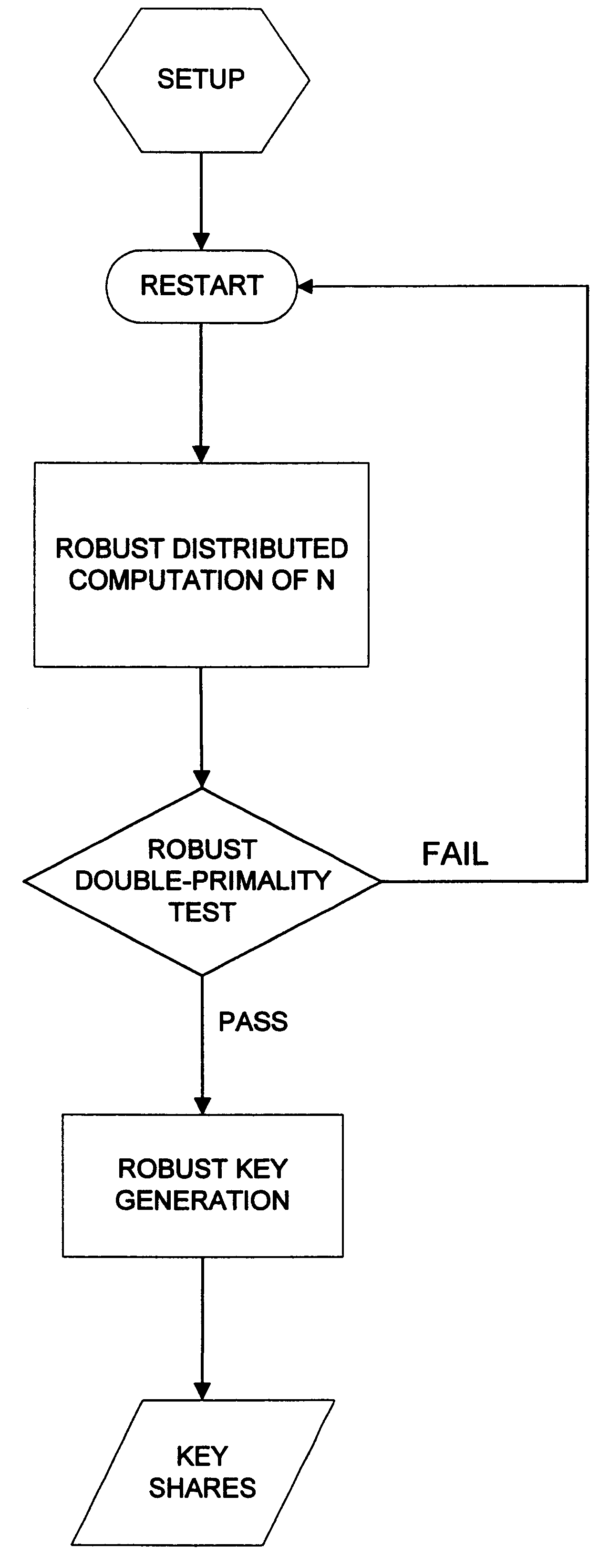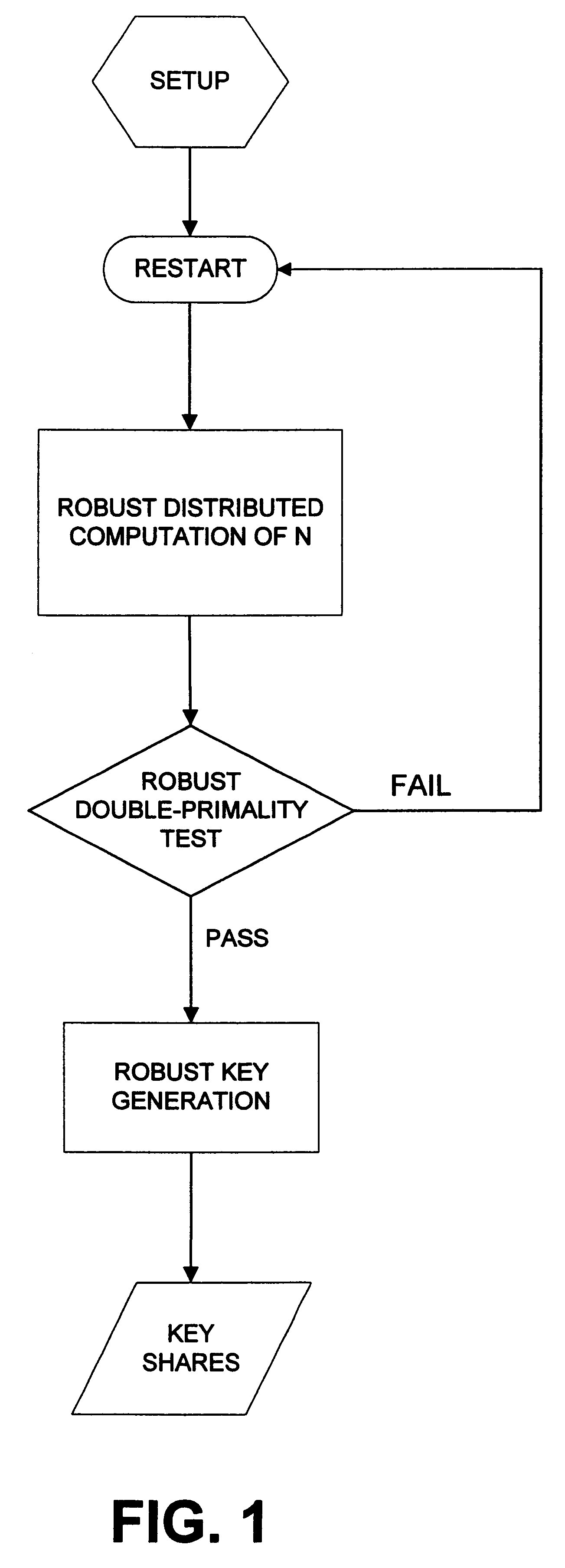Robust efficient distributed RSA-key generation
a distributed rsakey and efficient technology, applied in the field of robust efficient distributed rsakey generation, can solve the problems of preventing a non-corrupted server, unable to modify messages sent to c by a server, etc., and achieve the effect of reducing the number of modular exponentiations
- Summary
- Abstract
- Description
- Claims
- Application Information
AI Technical Summary
Benefits of technology
Problems solved by technology
Method used
Image
Examples
Embodiment Construction
Robustness has motivated basic notions in cryptography such as verifiable secret sharing [CGMA] and general zero-knowledge proofs [GMR]. The present invention provides for the robust, efficient and secure generation of shared RSA keys (or more generally, keys based on multiplying two large primes and exponentiation). It assumes a number n of participants that participate in generating shares of a cryptographic key. The participants may be programmed computers connected by a communication network. The method will successfully generate shares of a key for n.gtoreq.2t+1, i.e., where at most t parties misbehave in any malicious and arbitrary way. The method achieves optimal resilience, since a majority of good participants is required. If n.gtoreq.3t+1, a slightly more efficient variant of the protocol may be used.
Techniques of the present invention solve numerous other problems, because they can be employed to distributively initiate other cryptographic schemes based on composite numbe...
PUM
 Login to View More
Login to View More Abstract
Description
Claims
Application Information
 Login to View More
Login to View More - R&D
- Intellectual Property
- Life Sciences
- Materials
- Tech Scout
- Unparalleled Data Quality
- Higher Quality Content
- 60% Fewer Hallucinations
Browse by: Latest US Patents, China's latest patents, Technical Efficacy Thesaurus, Application Domain, Technology Topic, Popular Technical Reports.
© 2025 PatSnap. All rights reserved.Legal|Privacy policy|Modern Slavery Act Transparency Statement|Sitemap|About US| Contact US: help@patsnap.com


